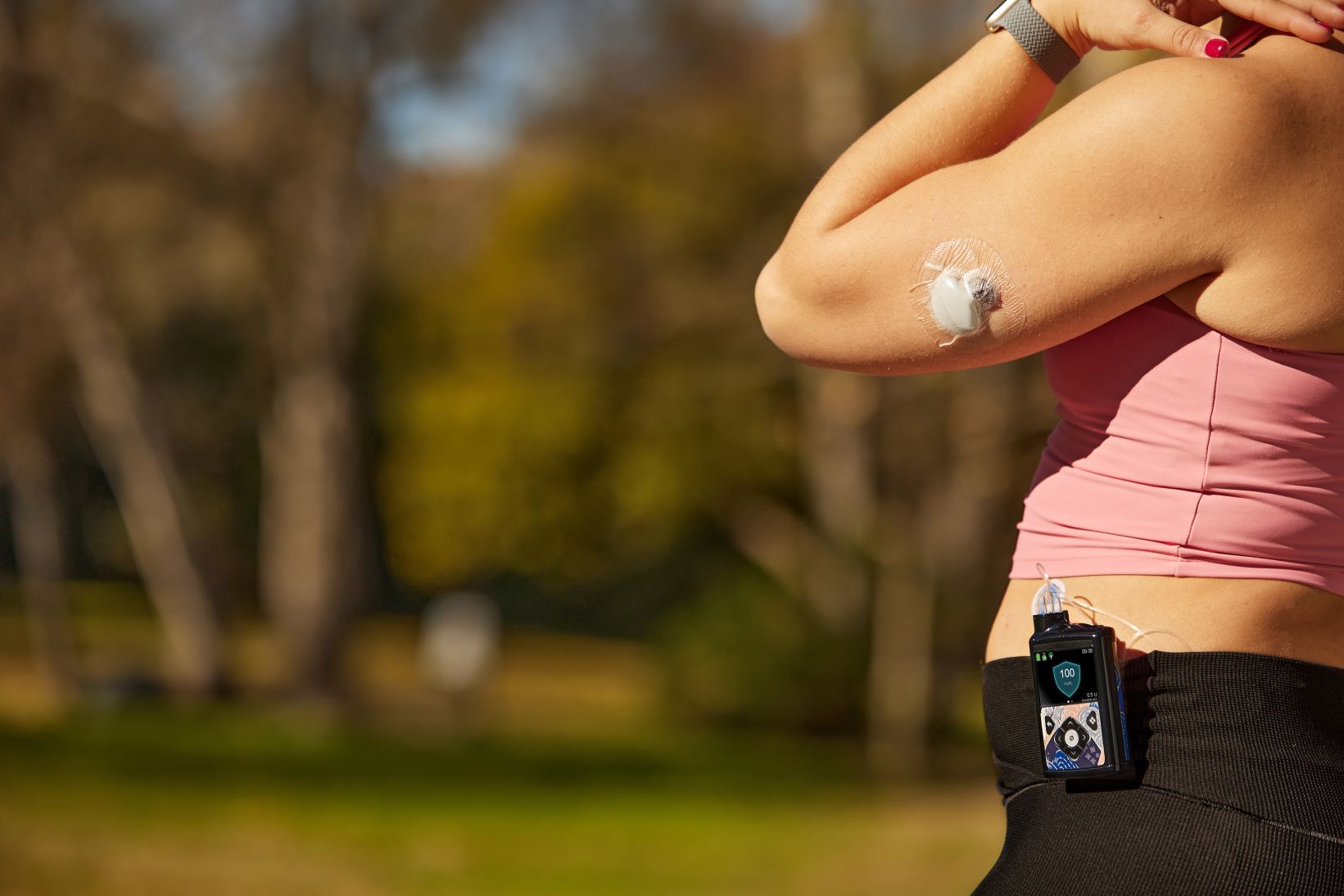Starting insulin pump therapy: 8 frequently asked questions

Certified Diabetes Educator pumper for 25 years, and person with type 1 diabetes for over 42 years, Dawna Sanchez, has trained many patients (including me!) on insulin pump therapy, and there have been some common themes that surface when she starts training. Today, Dawna is sharing her knowledge and experience with you, as both a patient and a professional, in addressing eight commonly asked questions.
Question #1: Will it Hurt?
Well, that depends. I generally have to say no, but everybody is different. Different infusion sets go in differently, and everybody has different pain thresholds. So, it just depends...on where you put it, how lean you are, how sensitive you are, how hard you push, etc. If I say it won't hurt, it invariably does. If I say it might hurt a little bit, it invariably doesn't. But almost everyone agrees, it hurts way less than taking 4 to 5 shots a day, and a lot less than sticking your fingers to check your blood sugars, that's for sure!
Question #2: Will I Need Surgery?
No! The pump has a little plastic piece called a "cannula" that you insert into your belly, thigh, or upper buttocks areas that you will learn to change out yourself every two to three days. The cannula delivers insulin under your skin so you don't have to take insulin shots anymore. You don't have any surgery for this to happen, only a little training to learn how to do it all.
Question #3: Can I Take The Pump Off?
Yes, you can suspend and disconnect your pump and tubing from your infusion site with a simple pinch and turn (in most cases). However, you should never interrupt or stop the insulin delivery on your pump for more than an hour or so, unless you have a backup plan. When disconnecting, be sure to suspend your pump so that insulin isn't delivered while the pump is not attached to you. You need to wear the pump most of the day and night (just clip it to your PJs or let it lay next to you in bed) in order to get the insulin you need. Depending on what you're doing, you can be free of your pump for an hour or so to do things such as take a shower, go swimming, or for those intimate moments.
That leads us to....
Questions #4: Can I play sports/do activities with my pump on or off?
Yes, and yes! Again, it depends on what you are doing. Many of my patients take their pump off for an hour while they're playing sports, and then put it back on afterwards and everything is just fine. If you will be playing for longer than an hour without your pump on, it is recommended to check your blood sugar around the one hour mark and see where you are. If your blood glucose is high, reconnect back to your pump, give yourself a bolus to correct your blood sugar, and then disconnect again and go back to your activity. This all takes about one minute to do. If your blood sugar is fine, then just stay disconnected, and keep playing. If you plan on taking part in activities where this will be common, we do recommend discussing this with your healthcare team.
Question #5: Will I Still Take My Long Acting Insulin Shot?
No! No more long acting insulin shots! The insulin pump uses only rapid acting insulin (similar to what a 'real' pancreas does), and drips it in all day long in very small doses. The pump gives bigger doses, or a bolus (a bolus for a 'bowl' of food), when you eat, so that you no longer need to take a long acting insulin. Yay!
Question #6: Will I Need to Count Carbs?
Yes, counting carbohydrates is a good thing to do when you have diabetes. It's not rocket science. It just takes practice. Carbs are the one thing that can really affect our blood sugar and throw us into a tailspin, whether we have too many of them, or not enough. Your insulin pump will give you a specific dose of insulin (a bolus), based off your current blood sugar reading (on your glucose meter), how many carbs you are eating (manually entered into the bolus wizard after calculating), and what has been previously programmed into your pump. Therefore, when reading food labels, it is important to look at the serving size and total carbohydrates in a serving, NOT just the grams of sugar, because total carbohydrates is what will affect your blood glucose in the long run.
There are many good books, apps, and websites out there that can make it very simple and almost painless to count your carbs. Most food items have nutrition labels on them, and most restaurants have nutrition facts that you can ask for.
Questions #7: Do I Still Need To Check My Blood Sugars?
Yes, you still need to check your blood sugars while wearing a pump, no matter what, especially before you eat. Even if you are wearing a continuous glucose monitoring system (CGM) along with your pump, you should check your blood sugar before eating and correcting a high, just to be sure you are correcting on an accurate blood sugar number. Especially for those of us who are more insulin sensitive, you want to be sure you are not over correcting on an inaccurate number. I have found that many people who start insulin pump therapy look forward to checking their blood sugar because they like seeing the results of having better control and having the ability to correct high blood glucose with the pump, instead of having to stick themselves again with a needle. When first starting on an insulin pump, your doctor may want you to check your blood sugar more frequently to be sure your pump settings fit your needs. This allows him or her to make any necessary adjustments to your pump settings so you get the best results possible.
Question #8: Will I be 'Normal'? (What is 'normal'?)
Yes, in fact I think you'll be more "normal" than if you take insulin shots. No more running to the bathroom (eww!) to take your shots before a meal at a restaurant, or filling your syringes in front of your friends. With the pump, it is much more discreet. You can check your blood sugar in your lap at the table or in your car before you go in the restaurant, calculate your carbs when your food comes, enter your meter BG and carb grams into your pump, hit a few buttons, put the pump back into your pocket, and eat your meal. It does the rest, pumping the insulin you need into you while you eat. What could be more normal than that? Kind of like a real pancreas, right?
On multiple daily injections, four insulin shots per day is equivalent to 1460 shots per year. On an insulin pump, one infusion set poke every 3 days is equivalent to 122 pokes a year. Something to think about for all of us 'pin cushions' out there!
Happy pumping to you all!
IMPORTANT SAFETY INFORMATION
- Medtronic Diabetes insulin infusion pumps, continuous glucose monitoring systems and associated components are limited to sale by or on the order of a physician and should only be used under the direction of a healthcare professional familiar with the risks associated with the use of these systems.
- Successful operation of the insulin infusion pumps and/or continuous glucose monitoring systems requires adequate vision and hearing to recognize alerts and alarms.
Medtronic Diabetes Insulin Infusion Pumps
- Insulin pump therapy is not recommended for individuals who are unable or unwilling to perform a minimum of four blood glucose tests per day.
- Insulin pumps use rapid-acting insulin. If your insulin delivery is interrupted for any reason, you must be prepared to replace the missed insulin immediately.
Medtronic Diabetes Continuous Glucose Monitoring (CGM) Systems
- The information provided by CGM systems is intended to supplement, not replace, blood glucose information obtained using a home glucose meter. A confirmatory fingerstick is required prior to treatment.
- Insertion of a glucose sensor may cause bleeding or irritation at the insertion site. Consult a physician immediately if you experience significant pain or if you suspect that the site is infected.
Please visit MedtronicDiabetes.com/isi for more details.



